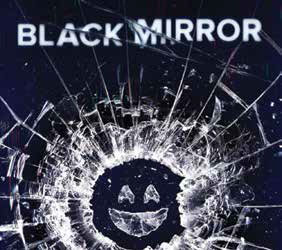
Dear Sirs
I was motivated by the SANRAL editorial insert that came with the Mercury newspaper wherein it was confirmed that “There are some 9 500 bridges and major culverts on SANRAL’s roads and these are inspected...” etc.
While this is true, there are (possibly) thousands of minor steel culverts that perhaps slip through the net and if failure occurs, the results can be devastating and expensive to repair.
As a regular road user, I never fail to be impressed with the standard of our country’s main roads – they are world class – but the recent collapse of the relatively new John Ross carriageway highlights the urgent need for the condition of culverts (underground structures) to be very closely monitored.
My ex-company’s (Jacked Pipelines) very first contract in 1989 followed close on the heels of very heavy floods, whereby three inadequate or failed culverts in northern KZN were replaced/upgraded using the nondisruptive pipe-jacking method. In most cases road users were completely unaware of the work being undertaken below. The method is both costeffective and non-disruptive, but it has to be undertaken before culvert failure is too advanced – prevention is better than cure.
I really believe that with the age of many of our roads, it is time for all road-owners to conduct an audit of all existing culverts, record their condition and location, and develop a register much like that for bridges. Once done, funding must be made available and a prioritised upgrade/ repair programme instituted.
If this is not done, we can expect many more – very costly – failures to occur, especially during or after heavy rainfall.
I should add here that the majority of potential failures, in my experience, appear to be in the 50km coastal zone, where high corrosion and steeper culvert gradients prevail. The consequences of failure of a 600 internal diameter culvert can be just as disastrous as failure of the very large structures.
– Peter Sharland, via email
Ed’s note: The collapse of the John Ross Parkway may or may not have been as a result of a defective or corroded culvert. As it is not a SANRAL road, we cannot be sure. We do inspect all bridges and major culverts every five years. This involves a comprehensive visual inspection of every element of the structure and is undertaken by a trained, experienced and accredited bridge inspector. They identify defects requiring urgent attention and compile a condition index for every structure. Monitoring inspections are undertaken biannually by the Route Manager to visually identify defects that have become apparent since the last inspection.
We are aware of certain routes where the corrugated steel culverts were constructed and have had some replaced, depending on their condition. Over the years, several larger steel culverts have been retrofitted with a concrete base and concrete lining. We have also undertaken pipe-jacking, replacing the steel culverts on certain parts of the network.
We love hearing road stories and comments. Send yours to pressoffice@nra.co.za and you might end up on our Letters page

Last edition’s crossword driving you crazy? Not to worry, you can find the solutions on Pg 23.

What is this? A TV show that appeals to both technophobes and tech lovers? Is this a glitch in the matrix?
If you’re a tech head, it’s likely the British-made TV show Black Mirror is on your radar. And if the rise of the machines gives you the heebie-jeebies, this will probably be right up your alley. All you need is a Netflix account. Seasons 1-4 are currently available on the streaming service.
Black Mirror is the brainchild of TV critic and satirist Charlie Brooker. It takes the form of a series of self-contained episodes in various futuristic settings. The lynchpin for each entry is that it focuses on a piece of imaginary tech that plays a central role in the narrative. Imagine a world where you can rewind your own memories and play them back in picture-perfect detail. Or create your own, totally immersive virtual world based entirely on Star Trek! What if your job prospects were tied to your popularity ratings on a particular social media site?
All of these scenarios have featured in Black Mirror, which works on a number of layers. It’s part social commentary, part science fiction and is by turns disturbing, hilarious and hide-behind-the-couch frightening. While it signals the risks of relying too heavily on mankind’s technological progression, it never veers into sermonising and will leave you to make up your own mind on each outcome. While all the tech in the storylines is completely believable, there is some fantastic imagination behind each plot.